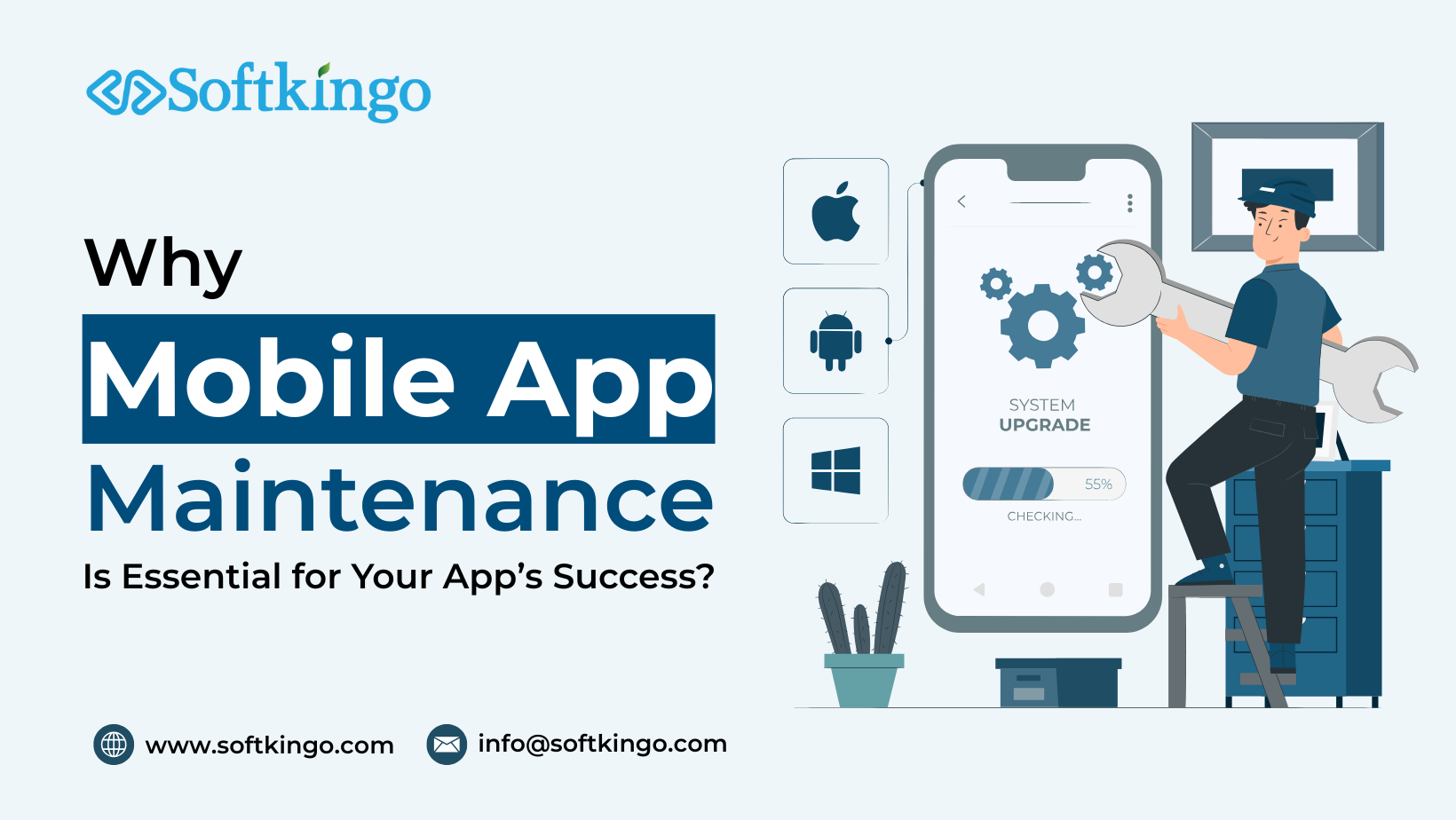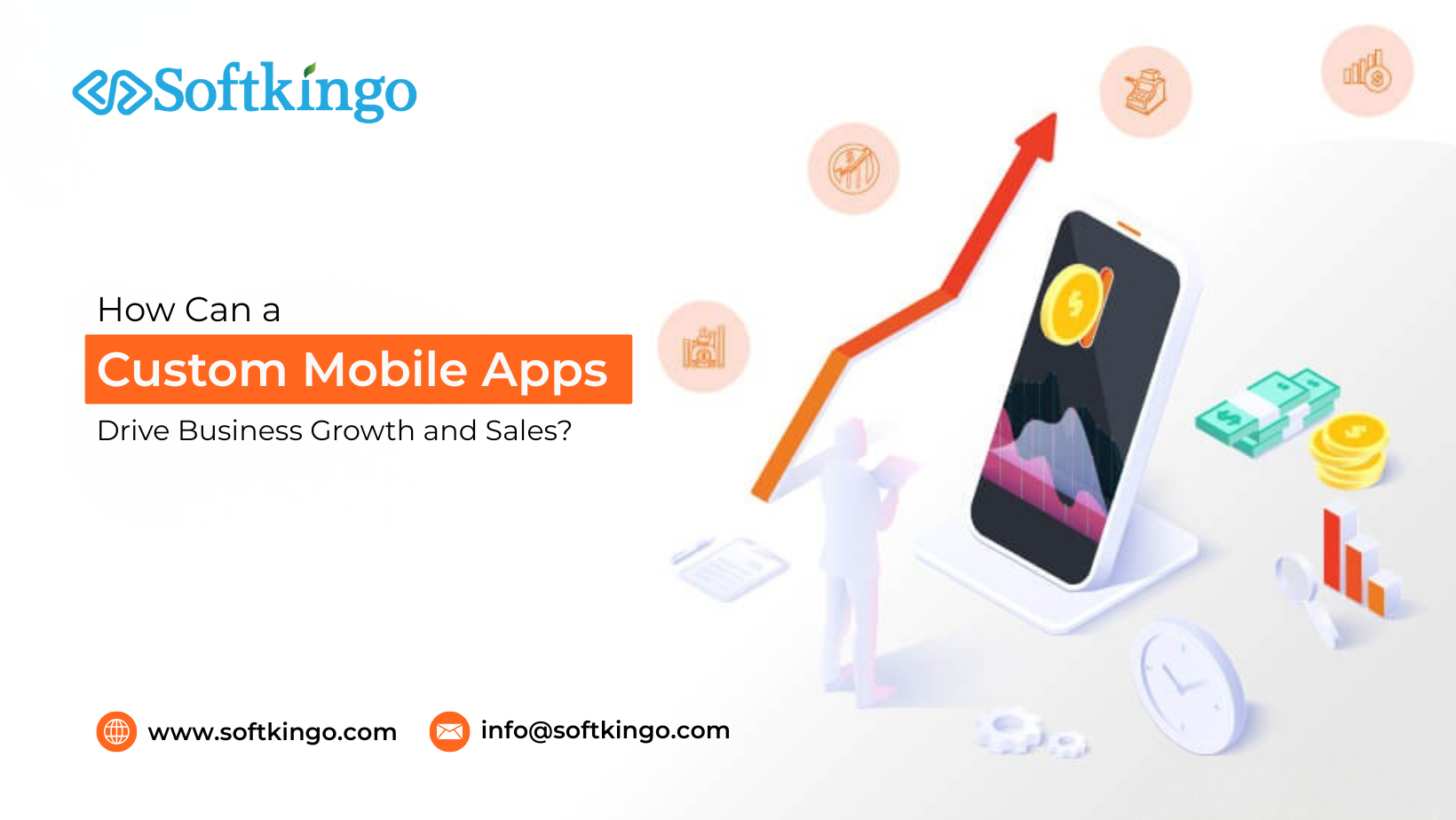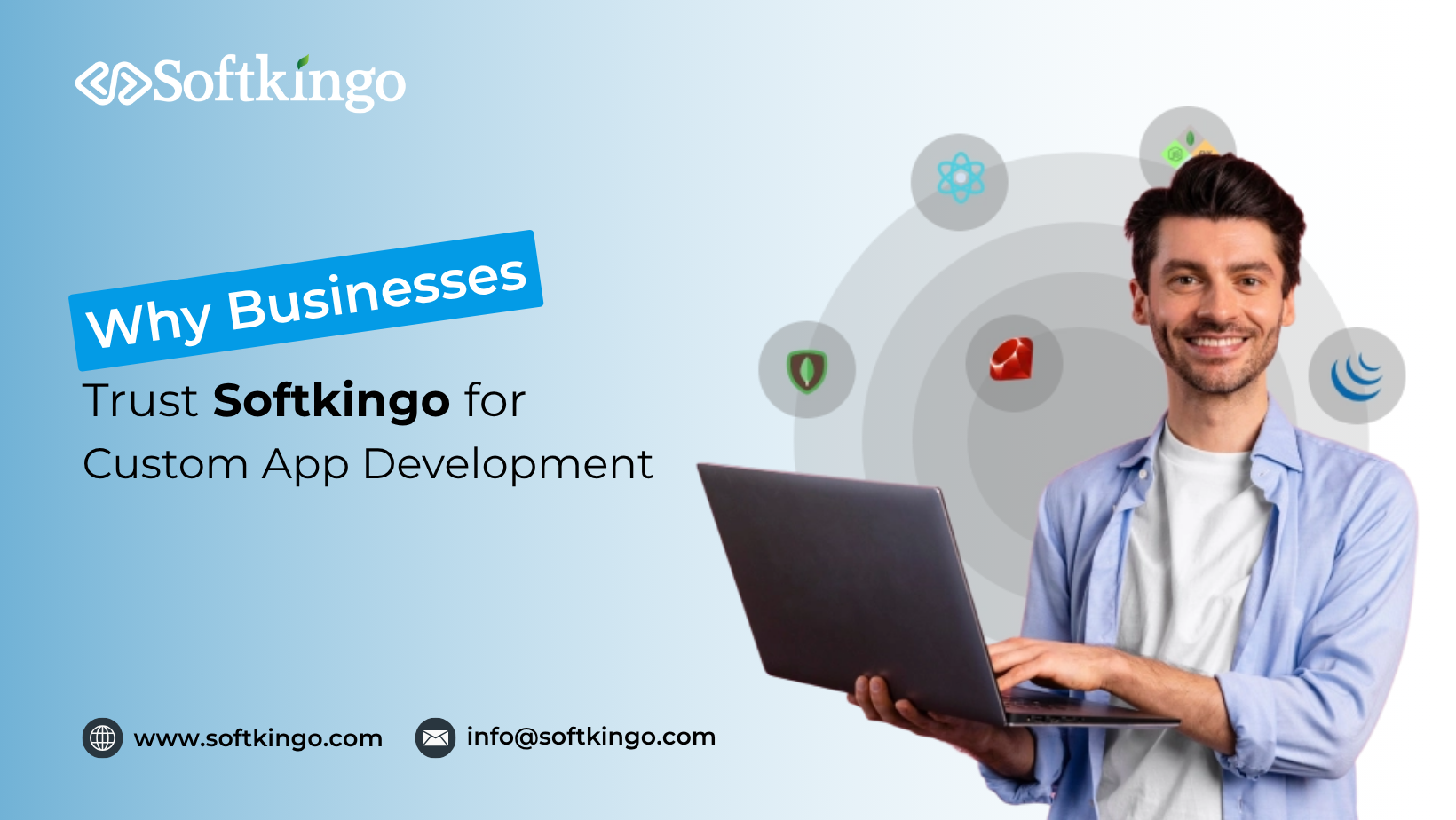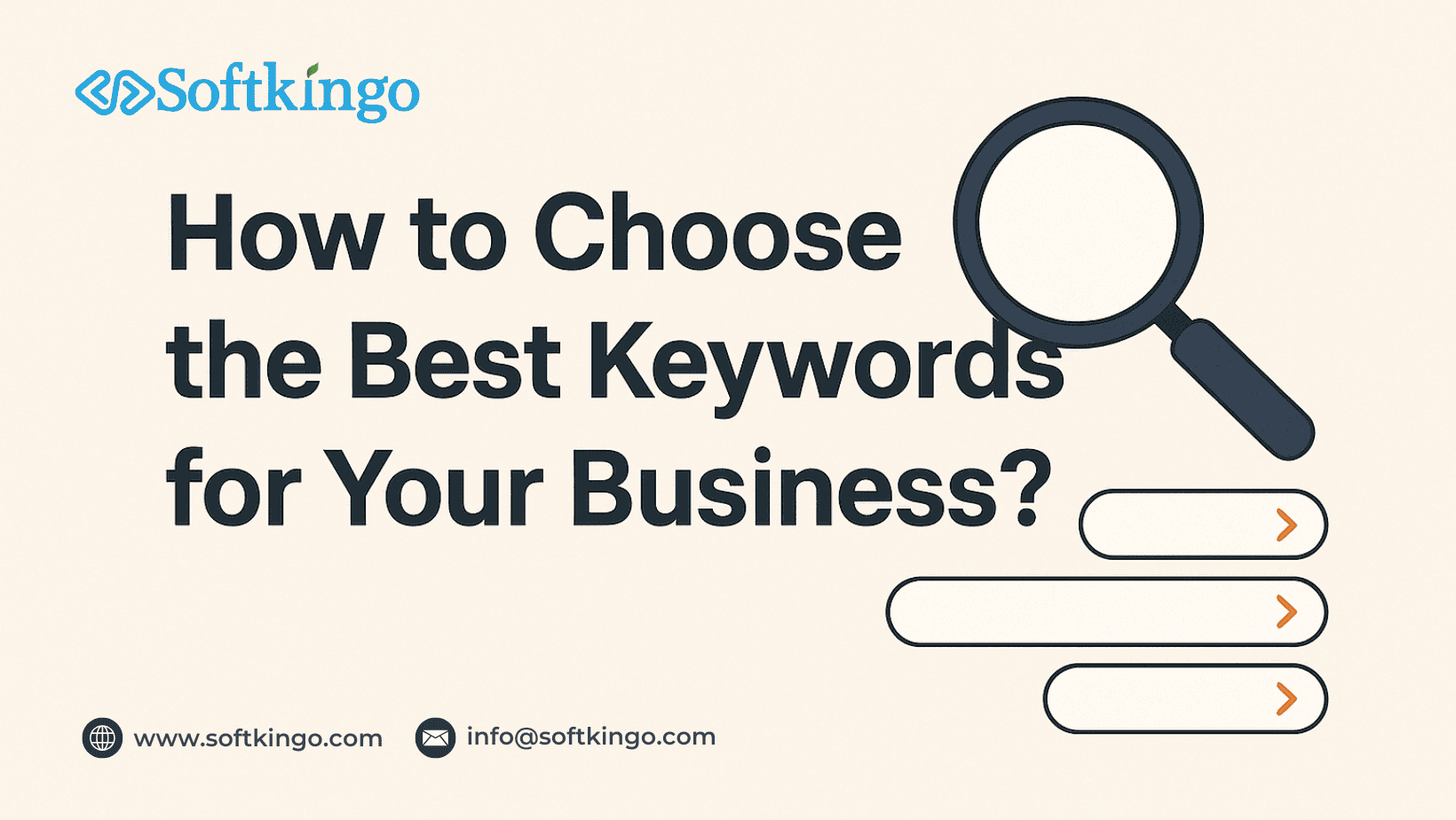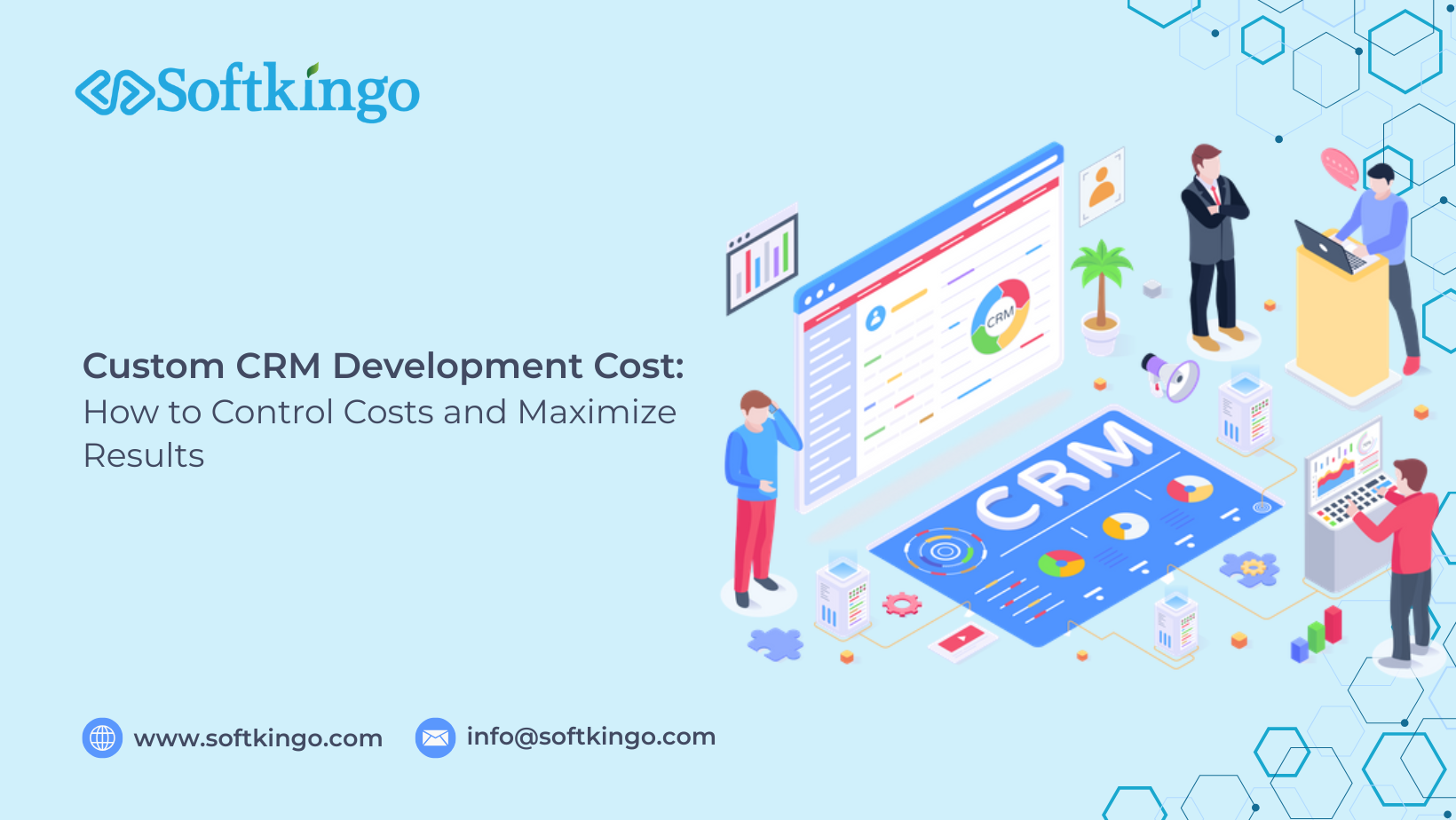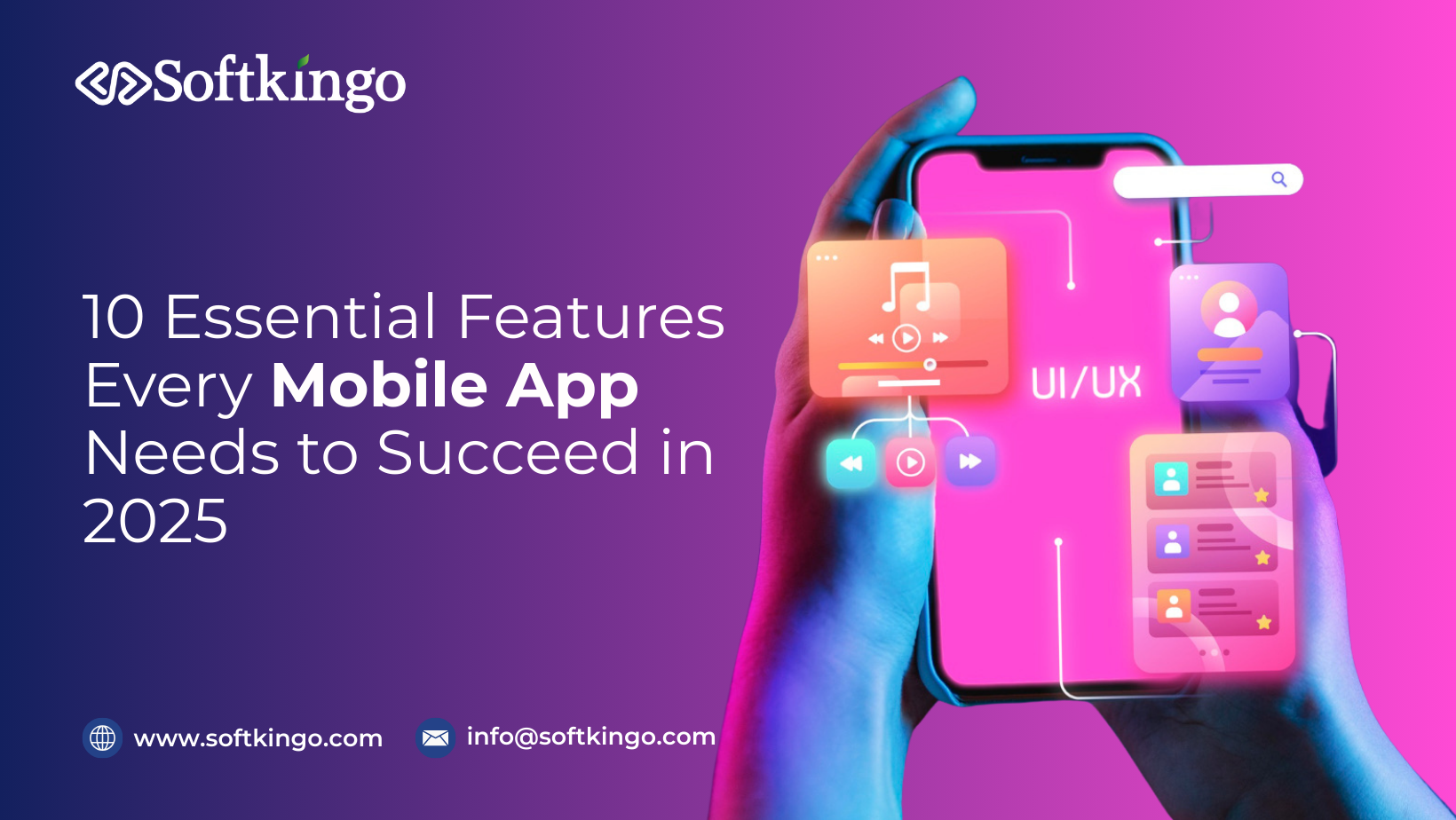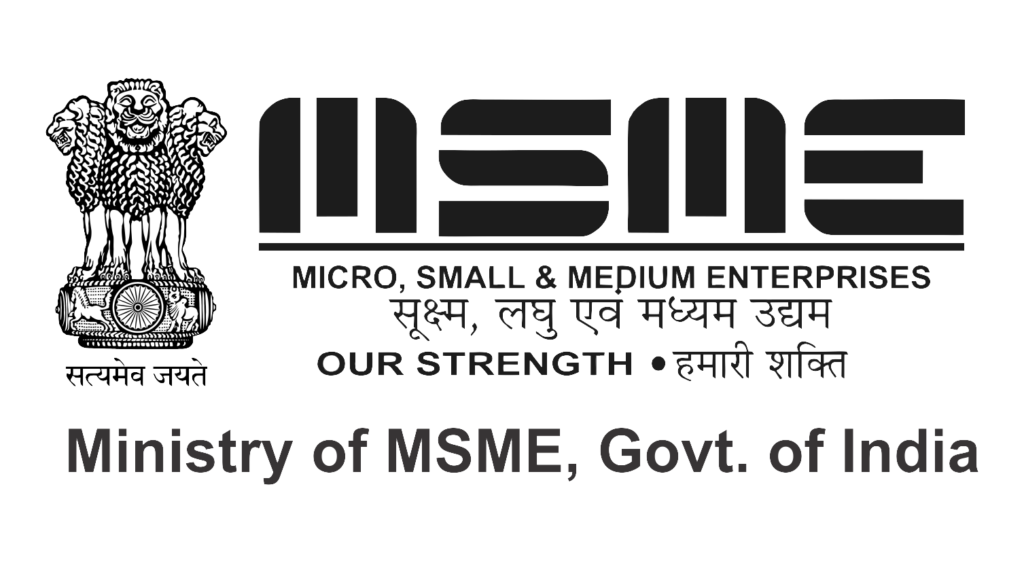
Did you know the global podcasting market is expected to surpass $150 billion by 2030?
This explosive growth is fueled by the rise of video-based content and the expanding creator economy.
As audiences crave authentic, face-to-face conversations and creators look for deeper engagement opportunities, video podcasts have quickly become one of the most influential formats in digital media.
But here’s the real challenge: how do you build a video podcast app that truly stands out in such a fast-growing industry?
The key lies in a blend of innovation, intuitive user experience, and the right technology to keep viewers engaged.
In this blog, we’ll walk you through everything—from planning and must-have features to the tech stack and monetization strategies—so you can create a powerful video podcast app from the ground up.
What Is a Video Podcast App?
A video podcast app is a digital platform that allows creators to record, upload, and stream podcast episodes with both audio and visual components.
Unlike traditional podcast apps that focus solely on audio, video podcast platforms strengthen the connection between host and audience by showcasing expressions, gestures, and behind-the-scenes interactions—making the overall experience significantly more immersive.
When you create a video podcast app, it typically works by allowing creators to upload video files, store them on secure cloud servers, and stream them to users using adaptive video technology.
Viewers can watch, subscribe, download, comment, and interact—all within a single interface. Essentially, when you build a video streaming app for podcasts, you’re merging storytelling, visuals, and technology into one engaging platform.
Market Statistics: The Rise of Video Podcast Apps
Video podcasting is experiencing unprecedented growth, making now the ideal time to launch your platform. As user behavior shifts toward visual-first, interactive content, video podcasts are gaining massive global traction.
Here are the latest insights highlighting this momentum:
- According to Web Pro News, the global podcasting market is expected to reach $35.7 billion in 2025, with projections hitting $144.5 billion by 2035.
- Sweet Fish Media reports that 61.7% of the top 150 podcasts now publish full-length video versions, underscoring the dominance of visual content.
- Coherent Market Insights estimates that the global podcast market will reach $173.5 billion by 2032, driven by rising demand for creator-led content.
- Grand View Research states that the market sized at $30.72 billion in 2024 is projected to climb to $131.13 billion by 2030, at a powerful 27.0% CAGR from 2025 to 2030.
These trends show that video podcasting is no longer a niche—it’s the future of digital content. If you’re planning to build a video podcast app, you’re entering a rapidly expanding market with exceptional long-term potential.
Why Build a Video Podcast App?
Developing a podcast app isn’t just a technical investment—it’s a strategic move toward creative ownership, deeper audience engagement, and long-term scalability.
Here’s why launching your own video podcast app is worth it:
1. Reach a Wider Audience
Video podcasts blend visual and audio storytelling, attracting higher engagement and appealing to both listeners and viewers. This dual format strengthens brand recall and fosters deeper audience relationships.
2. Full Brand Ownership and Control
By building a custom video podcast app, you own every aspect of your platform—content, design, and monetization.
No reliance on third-party algorithms or shifting platform rules. Your brand grows on your terms.
3. Scalable Cloud-Based Infrastructure
A robust video podcast solution ensures seamless storage, global accessibility, and smooth streaming—whether you’re hosting ten episodes or ten thousand.
4. Multiple Revenue Streams
Your app becomes a complete business engine through:
- Ads
- Subscription plans
- Premium access
- Brand sponsorships
This gives creators full monetization control without sharing profits with external platforms.
5. AI-Enhanced User Experience
Using AI in video streaming apps can transform engagement through:
- Intelligent content recommendations
- Behavioral insights
- Automated captions
- Smart search and video clipping
AI keeps users engaged while reducing workload for creators.
6. A Future-Ready Platform
As digital consumption shifts heavily toward visual-first formats, launching a video podcast app today gives you a competitive edge.
It future-proofs your content strategy and positions your brand as an early innovator.
In short, a video podcast app is more than just a platform—it’s your own broadcasting hub, brand extension, and scalable revenue channel.
Key Features of a Video Podcast App
To build a video podcast app that truly captivates users, you’ll need features that balance ease of use, creativity, and scalability.
A high-performing app should help creators upload, edit, manage, and share content effortlessly, while delivering viewers personalized recommendations, smooth streaming, and offline access.
Here are the essential video streaming app features you should consider before starting development:
(List to be continued…)
Feature Category | Key Functionality | Why It Matters |
User Registration & Profiles | Easy sign-up via email or social media, profile customization | Helps personalize the user experience and track content preferences |
Content Upload & Management | Secure video uploads, episode scheduling, editing tools | Simplifies the creator workflow and ensures professional-quality uploads |
Adaptive Video Streaming | Auto-adjusts video quality based on internet speed | Provides a smooth, buffer-free viewing experience for every user |
Search & Discovery | Filters by category, topic, or creator; AI-driven recommendations | Enhances discoverability and boosts audience engagement |
Offline Viewing & Downloads | Download episodes for later access | Increases retention by allowing users to watch content anytime, anywhere |
Push Notifications | Alerts for new episodes, live events, or trending content | Keeps your audience active and updated |
Comments & Community Interaction | Likes, comments, shares, and discussion threads | Encourages social engagement and builds community around your content |
Analytics Dashboard (for Creators) | Insights on views, engagement, and audience demographics | Helps creators improve content strategy and performance |
Monetization Tools | Ads, subscriptions, and premium content access | Turns your app into a profitable business |
Cloud Integration | Centralized storage and content delivery via cloud servers | Ensures fast performance, scalability, and global accessibility |
AI-Powered Recommendations | Smart algorithms for personalized content suggestions | Boosts watch time and enhances user satisfaction |
Multi-Platform Access | Works across Android, iOS, and web | Expands audience reach and convenience |
How to Develop a Video Podcast App: A Step-by-Step Guide
Developing a video podcast app may seem overwhelming, but with thoughtful planning, the right technology, and a clear creative vision, you can build a feature-rich platform that stands out in today’s rapidly expanding video content market.
Whether you’re building an app for your personal brand, a startup, or an enterprise, this guide will walk you through each stage—from idea to launch.
Let’s dive into the complete process of creating a video podcast app.
Step 1: Define Your App Concept & Target Audience
The first step in building a video podcast app is understanding exactly what your platform will offer. A clear concept sets the direction for design, development, and branding.
Clarify your vision
– Will your platform support individual creators?
– Will it host exclusive brand-led shows?
– Will it focus on learning, entertainment, or interviews?
Identify your audience
Study user behavior: Are they interested in educational podcasts, talk shows, comedy, or business insights?
Analyze the competition
Look at platforms like YouTube, Spotify, Apple Podcasts, or Riverside. Identify their strengths, weaknesses, and opportunities for differentiation.
A well-defined concept ensures you build a video podcast app with features your audience truly wants.
Step 2: Choose the Right Platform
Your platform choice directly shapes your reach and revenue potential.
- Android offers wide global accessibility—ideal for reaching a massive, diverse audience.
- iOS users typically spend more—making it perfect for premium, subscription-focused platforms.
- Cross-platform development with Flutter or React Native enables you to target both markets efficiently, reducing costs and development time.
Key considerations:
- Understand where your audience is most active
- Use cross-platform technology for faster launch
- Adhere to UI/UX standards for each OS
- Ensure scalability for future growth
Choosing the right platform early ensures smoother development and a user experience that scales effortlessly.
Step 3: Plan Essential Features & Functionalities
Features are the backbone of your video podcast app. To stand out, you need the right balance of performance, engagement, and user-centric design.
Must-have features include:
- User Profiles & Personalization
Personalized recommendations enhance engagement and help users discover relevant content. - High-Quality Video Streaming
Adaptive streaming ensures smooth playback, even on slower networks. - Engagement Tools
Features like comments, likes, and shares build community and strengthen creator-audience relationships. - Analytics & Monetization Dashboard
Give creators insights into views, watch time, and earnings.
Once these core features are defined, you can set a clear development timeline that aligns design, coding, testing, and deployment.
Step 4: Design a User-Centric Interface
A great video podcast app isn’t just visually appealing—it’s effortless to use. The UI/UX should feel natural from the very first tap.
Design elements to focus on:
- Visual Appeal
Clean, minimal layouts and optional light/dark modes enhance viewer comfort. - Intuitive Navigation
Users should easily find subscriptions, trending episodes, and saved content with minimal effort. - Responsive Layouts
Ensure seamless viewing on phones, tablets, and desktops. - Accessibility
Include captions, transcripts, and flexible playback controls.
Good design isn’t only about aesthetics; it’s about delivering an enjoyable, inclusive experience that keeps users coming back.
Step 5: Choose the Right Tech Stack
Your tech stack determines your app’s speed, scalability, and overall performance. Investing in the right tools ensures your platform is ready for high traffic and future enhancements.
Key components include:
- Frontend Frameworks
Flutter, React Native, Swift, or Kotlin help you build fast, responsive interfaces. - Backend Development
Node.js, Django, or Laravel handle content management, APIs, and authentication. - Cloud & Storage Solutions
AWS, Google Cloud, or Azure ensure secure, scalable video hosting and global delivery. - Video & AI Tools
FFmpeg, Wowza, or TensorFlow support video encoding, processing, and intelligent recommendations.
Selecting a strong mobile app tech stack early helps you build a platform that’s not only high-performing but also future-ready.
Step 6: Integrate Cloud and Security Layers
Security and cloud infrastructure are essential for reliable video delivery and user trust.
Key security measures include:
- AES-256 encrypted video storage
- Token-based authentication
- DRM for protecting premium content
- Secure payment integrations
Using cloud platforms like AWS CloudFront or Google Cloud CDN ensures fast video playback while protecting against unauthorized access.
Step 7: Develop & Test the App
This is where planning transforms into a fully functional product.
Development workflow:
- Agile Development: Break the project into sprints for faster execution.
- Backend Setup: Configure APIs, databases, and user authentication.
- Frontend Development: Implement UI screens and link them to the backend.
- Integration: Add video encoding, push notifications, and analytics tools.
After building the app, perform thorough testing for:
- Smooth video playback
- Proper navigation
- Data security
- Device and network compatibility
A polished testing phase ensures a seamless and reliable user experience.
Step 8: Add Advanced App Features
To build a video podcast app that truly stands out, incorporate next-gen features such as:
- AI-Powered Recommendations
Suggests episodes based on behavior and preferences. - AR/VR Experiences
Allow users to attend virtual live sessions or explore immersive environments. - Voice Search
Makes content discovery faster and more intuitive. - Real-Time Analytics
Gives creators powerful insights into user engagement. - Live Streaming
Enables real-time Q&A, sessions, and events.
These innovations transform your platform from a simple video player into a cutting-edge digital experience.
Step 9: Launch & Promote Your App
Once testing is complete, prepare for launch by optimizing your app store listings with high-quality visuals, descriptions, and promotional videos.
To boost visibility:
- App Store Optimization (ASO)
Use keywords like video podcast, podcast streaming, and video streaming app. - Social Media Marketing
Share teasers, creator partnerships, and behind-the-scenes content. - Collaborations
Partner with influencers and podcasters to expand your reach. - Content Marketing
Publish blogs and guides to build organic traction.
Promotion doesn’t stop after launch—sustained engagement and updates are key to long-term success.
Step 10: Maintenance & Future Updates
Once your app is live, ongoing maintenance ensures performance, stability, and user satisfaction.
Focus on:
- Fixing bugs and improving speed
- Updating the UI/UX periodically
- Adding new revenue and engagement features
- Monitoring analytics to understand user behavior
Building a video podcast app isn’t just a one-time effort—it’s an ongoing journey of improvement and innovation.
Tech Stack for Developing a Video Podcast App
Choosing the right video streaming app tech stack ensures smooth playback, high performance, and long-term scalability. Every layer—from frontend development to backend architecture—plays a vital role in shaping your app’s success.
Here’s a breakdown of a reliable, industry-ready tech stack for video podcast platform development:
(If you want, I can continue this section with a full tech stack table.)
Category | Technologies / Tools | Purpose |
Frontend | Flutter, React Native, Swift, Kotlin | For cross-platform and native mobile app development |
Backend | Node.js, Django, Laravel | For managing APIs, servers, and app logic |
Database | Firebase, PostgreSQL, MongoDB | To store user data, media, and preferences |
Cloud Storage | AWS, Google Cloud, Azure | For scalable hosting and video delivery |
Video Processing | FFmpeg, Wowza, AWS Elemental MediaLive | To handle video encoding, compression, and streaming |
AI & Analytics | TensorFlow, Google Analytics, Mixpanel | For data insights, personalization, and engagement tracking |
Security & Authentication | OAuth 2.0, SSL, JWT | To secure user data and prevent unauthorized access |
A strong app tech stack ensures stability, high performance, and the flexibility to integrate emerging technologies such as AR/VR and AI-driven personalization in the future.
Cost to Develop a Video Podcast App
Curious about the real cost of turning your video podcast idea into a fully functional app?
In most cases, the cost to develop a video podcast app ranges from $20,000 to $50,000+, depending on factors like complexity, platform choice, feature depth, and overall design requirements.
Apps equipped with advanced capabilities—such as live streaming, AI-based recommendations, adaptive streaming, or cloud scalability—typically fall toward the higher end of the range.
If you’re estimating the cost to build a video streaming app, it’s important to remember that various elements can influence your total investment, including:
- UI/UX design quality
- Backend system architecture
- Cloud and storage requirements
- Video encoding and processing tools
- Third-party integrations
- Real-time analytics and reporting
- Multi-platform development (iOS, Android, Web)
While these factors may increase the upfront cost, they significantly enhance the user experience, platform reliability, and long-term return on investment.
Here’s a detailed cost breakdown to help you plan effectively:
Development Aspect | Estimated Cost (USD) | Development Time (Approx.) |
UI/UX Design | $2,000 – $5,000 | 2–4 weeks |
Frontend & Backend Development | $8,000 – $20,000 | 6–10 weeks |
API & Third-Party Integrations | $3,000 – $7,000 | 2–3 weeks |
Video Processing & Streaming Setup | $4,000 – $10,000 | 3–5 weeks |
Testing & QA | $2,000 – $5,000 | 2–3 weeks |
Deployment & Maintenance | $1,500 – $3,000+ | Ongoing |
Investing strategically in the right tools and technical expertise ensures your app remains scalable, user-friendly, and ready for future upgrades. Partnering with the best mobile app development company can streamline everything—from choosing the ideal tech stack to optimizing performance, security, and monetization. With the right partner, your video podcast app can stand out in today’s highly competitive streaming landscape.
Top Video Podcast Apps to Know in 2025
The rise of video podcasting has transformed how creators share stories and how audiences engage with them. Viewers no longer just listen—they enjoy visual storytelling, guest interactions, behind-the-scenes moments, and immersive multimedia experiences.
As the industry continues to evolve, several platforms have emerged as leaders by offering powerful creator tools, innovative features, and user-first experiences.
Here are the top video podcast apps dominating 2025—and what makes them exceptional.
1. YouTube Podcasts
YouTube continues to dominate video podcasting with its massive creator ecosystem and world-class recommendation engine. Anyone looking to develop an app like YouTube can learn from its frictionless streaming experience and extensive monetization options.
Why It’s Special
- Massive built-in audience
- Smart content discovery powered by recommendations
- Multiple monetization options for creators
What’s New in 2025
- A dedicated YouTube Podcasts tab for organized browsing
- AI-generated chapters and summaries
- New monetization pathways under the YouTube Partner Program
- Experiments with multi-angle podcast views and improved live tools
2. Spotify Video Podcasts
Spotify’s expansion into video podcasting has been strategic and impactful. For brands aiming to develop an app like Spotify, the platform offers a perfect example of smooth streaming, creator analytics, and global reach.
Why It’s Special
- Seamless audio + video integration
- Advanced analytics for creators
- Interactive tools such as polls, comments, and Q&A
What’s New in 2025
- Broader global support for video uploads
- Creator Studio 3.0 with AI-powered insights
- Interactive engagement on more devices
- Personalized “video podcast highlights” reels for users
3. Amazon Prime Video Podcasts
Amazon is merging its Prime Video capabilities with podcasting, giving creators a premium stage for high-quality visual storytelling.
Why It’s Special
- Deep integration with Prime Video’s ecosystem
- Studio-grade production support
- Strong monetization via ads, subscriptions, and exclusives
What’s New in 2025
- Exclusive video podcast originals
- AI-powered content discovery across Fire TV and Prime Video
- Interactive episodes with polls and multi-camera storytelling
This cinematic approach brings a new dimension to video podcasting.
4. Apple Podcasts (Video Upgrade)
Apple Podcasts’ video integration has added a layer of premium competition to the industry.
Why It’s Special
- Exceptional content quality
- Privacy-focused ecosystem
- Effortless syncing across Apple devices
What’s New in 2025
- Native video subscriptions via Apple Podcasts+
- Dolby Vision support for creators
- On-device machine learning for smarter, privacy-first recommendations
Apple’s strong ecosystem makes it a top choice for premium creators and brands.
These leading platforms are shaping the future of video podcasting with cutting-edge tools, AI features, and interactive experiences. Studying them can give you clarity on what modern audiences want—and what to include in your own platform.
And when you’re ready to begin development, be sure to hire mobile app developers who can build a scalable, high-performing video podcast app.
Challenges in Developing a Video Podcast App
Building a video podcast app comes with unique challenges at each stage. Understanding these early helps you reduce risks, optimize costs, and deliver a seamless user experience.
Challenge 1: Performance Optimization
Streaming HD or 4K content without buffering requires a robust backend, scalable servers, and adaptive streaming. Any performance issues directly impact user satisfaction.
Solution
Use adaptive bitrate streaming, global CDNs, and caching systems to ensure smooth, buffer-free playback.
Challenge 2: Data Security
Protecting user data, payments, and creator content is essential—especially with rising cyber threats.
Solution
Implement end-to-end encryption, DRM content protection, secure APIs, and multi-factor authentication.
Challenge 3: Monetization Barriers
Many platforms struggle to convert free users into paying subscribers or attract advertisers without disrupting the viewing experience.
Solution
Use a hybrid monetization strategy combining subscriptions, ads, freemium tiers, and pay-per-view options.
Challenge 4: Scalability
As your audience grows, handling thousands of concurrent viewers becomes a major challenge.
Solution
Use cloud platforms like AWS, Azure, or Google Cloud with auto-scaling, load balancing, and a microservices-based architecture.
Challenge 5: Poor User Retention
Even well-designed apps can lose users if the experience feels repetitive or lacks personalization.
Solution
Add AI-driven recommendations, intuitive UI, regular content updates, and community features like comments and polls.
Addressing these challenges requires a blend of smart architecture, design thinking, and continuous optimization. With the right approach, your app can remain competitive, reliable, and ready to scale.
Future Trends Shaping Video Podcast Apps
Staying updated with the latest video streaming app trends is essential for building a future-ready platform. As audience expectations evolve, integrating modern technologies ensures your app stays relevant and competitive.
Here are the top innovations shaping the best video streaming apps in 2025 and beyond:
1. AI-Powered Content Recommendations
AI enhances content discovery by analyzing user behavior and suggesting personalized podcast episodes.
With help from an experienced AI app development company, you can implement smart algorithms that boost watch time and engagement.
2. AR and VR Experiences
AR/VR bring immersive experiences to podcasting—like virtual studios, interactive sets, and 3D environments.
These features elevate viewer engagement and differentiate your platform instantly.
3. Blockchain for Content Security
Creators want transparency and ownership. Blockchain ensures content authenticity, verifiable rights, and reduced piracy—building trust across the ecosystem.
4. Voice & Gesture Controls
Hands-free controls improve accessibility and convenience, allowing users to browse or play content effortlessly—perfect for multitaskers.
5. 5G-Enabled Streaming
With faster speeds and lower latency, 5G enables high-quality live streams, instant playback, and more stable HD/4K streaming on mobile devices.
6. Interactive & Live Features
Live chats, polls, reactions, and Q&A sessions turn passive listeners into active participants—boosting engagement and community building.
By adopting these trends, your video podcast app becomes more interactive, personalized, and future-ready.
Monetization Models for a Video Podcast App
Choosing the right mobile app monetization strategy is crucial for long-term scalability and profitability. The best approach balances user experience with predictable revenue.
Here are the top monetization models to consider:
1. Subscription Model (SVOD)
Charge users monthly or annually for ad-free streaming, premium episodes, or exclusive content.
2. Ad-Based Model (AVOD)
Display non-intrusive ads before or during episodes. Ideal for attracting a wide audience without upfront cost.
3. Pay-Per-View (TVOD)
Allow users to pay for individual episodes, special releases, or live events.
4. Freemium Model
Offer basic features free while locking advanced tools or ad-free experiences behind a paywall.
5. Sponsorships & Brand Collaborations
Feature sponsored content, product mentions, or co-branded podcast series to diversify revenue.
A hybrid monetization strategy often works best—combining subscriptions, ads, and sponsorships tailored to audience behavior.
Build Your Dream Video Podcast App with Softkingo
Softkingo is a leading video streaming app development company with years of experience building scalable, cloud-powered, and AI-integrated digital platforms.
Our team specializes in:
- End-to-end product development
- Cloud and streaming architecture
- Secure, high-performance video platforms
- AI-driven personalization
- Post-launch maintenance and optimization
From concept strategy to coding, testing, and enhancements, we handle the entire development cycle—turning your podcast vision into a powerful, future-proof platform.
Final Wrap-Up
The future of digital content is powered by video podcasts—a perfect blend of storytelling, technology, and visual engagement. Whether you’re a creator, startup, or enterprise, building your own video podcast app opens new doors for branding, monetization, and community building.
By leveraging the right tech stack, strategic features, and a trusted development partner, you can create a scalable, modern, and engaging platform that grows with your audience.
Paramhans Singh is the CEO and founder of Softkingo Technologies, bringing over 8 years of experience in delivering custom software solutions that help startups and enterprises achieve their business goals. He has successfully validated more than 220 app and website ideas and delivered over 100 tailored solutions, utilizing a range of technologies such as Swift, Kotlin, React Native, Flutter, PHP, RoR, IoT, AI, NFC, AR/VR, Blockchain, and NFTs.



